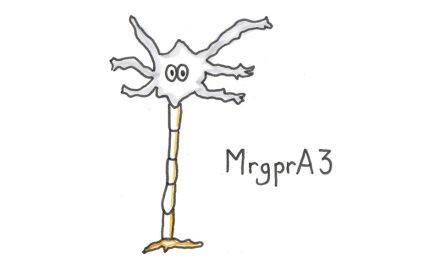
Any answer to this question will be, of course , pure speculation. However, exploring the possible outcomes of a successful Gunpowder plot is useful in highlighting the underlying tensions at play in what was a very charged historical context.
 What Actually Happened
What Actually Happened
A Catholic Plot
The 1605 gunpowder plot to assassinate King James I and destroy the English parliament was a relatively small conspiracy – the action of a handful of desperate Catholics with next to no chance of success.
Catholics were under constant surveillance from the security services, their houses raided and their priests imprisoned and executed. The ringleader, Robert Catesby, was already a marked man for his involvement in the Essex rebellion in 1601 against Elizabeth I] A lot depended on Guy Fawkes, who was outside the inner core of the plotters and was a convert rather than a cradle Catholic.
A Close Run Thing
The gunpowder plot came frighteningly close to dismembering the entire structure of monarchy, church and state in one spectacular strike.
Government propagandists worked hard to conceal this fact, but it could all have been so different, and James’s government knew it.
The significance of the barrels stacked in the cellar under the House of Lords was missed in the first security sweep of the palace. It wasn’t until a second search that 18 hundredweight of gunpowder was discovered under a pile of firewood.
Guy Fawkes was arrested carrying three fuses to prime the powder. A shaded lantern with a candle stood ready to supply the flame.
Fawkes received the death penalty for High Treason, and was dragged to the gallows in Old Palace Yard to be hanged, drawn and quartered. Before the executioner could begin the gruesome act, Fawkes leapt from the gallows, breaking his neck and sparing himself the excruciating fate the law had set out for him.
Other conspirators also escaped the chop. Ringleader Robert Catesby and several others were killed in a gunfight with authorities in Staffordshire, while another plotter died from illness at the Tower of London before he could stand trial.
 What Might Have Happened
What Might Have Happened
We can consider 2 aspects to a successful outcome of the Gunpowder plot – Destruction & Political Consequences
Destruction & Death
If the plot had run as intended, the destruction of life and property would have been devastating.
Estimates of a detonation on this scale suggest that the House of Lords, the nearby House of Commons and Westminster Hall would all have been destroyed.
Since 5 November would have been the start of a new session of parliament, the king and queen would have been at Westminster to receive the nobility and bishops. With them would have been 11 year old Henry, Prince of Wales, – the heir apparent.
MPs would have clustered at the back or in the corridor leading into the Lords, listening to the king’s speech and waiting to elect their speaker. The entire establishment of church and state – royal family, nobility, senior churchmen, knights, principal officers of the crown and prominent courtiers – would have been there in one tightly packed space. For anyone intent on destroying the Protestant state, it was an opportunity like no other.
Another casualty of the explosion would almost certainly have been Westminster Abbey, facing the House of Lords across Old Palace Yard.

Without a monarch or a parliament that could act in the king’s name, there would have been no one to give orders and no means of authorising legitimate government
With the king, queen, Prince of Wales and his key ministers all dead or dying, English government would have ceased to exist. The small garrison in the Tower, and the lord lieutenants who acted as military commanders in the counties, would have lost their entire chain of command. Without a monarch or a parliament that could act in the king’s name, there would have been no one to give orders and no means of authorising legitimate government.
Political Consequences – National Paralysis?
In this state of national paralysis, the plotters would have had to act fast. Catesby had prepared a rendezvous with local Catholic gentry close to his family home in Northamptonshire, under cover of a day’s hunting.
The “hunting” party’s target was King James’s daughter Elizabeth, 9 years old and under the guardianship of the Protestant Lord Harington at Coombe Abbey. Harington moved the princess to nearby Coventry when he heard about the plot, but his small retinue would have been quickly overwhelmed by Catesby’s armed band.
Two totally different scenarios could then have played out depending on what had happened to the 4 year old Prince Charles – Duke of York. Charles was the next heir to Prince Henry and the gunpowder plotters were unsure how to factor Charles into their plans – because they couldn’t be certain whether he would have been present at the opening of parliament.
- Scenario 01 : Charles Escapes the Explosion at Westminster
Charles would be king by inheritance. Thomas Percy was deputed to kidnap him from his household in London.
With the Prince of Wales dead and both Charles and Elizabeth in the hands of the rebels, loyalists to the monarchy would have had no figurehead around whom to rally. But if Charles had been moved to safety, to Scotland or to his mother’s native Denmark, then the Protestant establishment might have been able to regroup. The plotters would then have been forced to proclaim m Elizabeth as queen, many towns would probably have played for time until their corporations could establish which side was likely to win, just as they had done in 1553 during the attempted Protestant coup to put Lady Jane Grey on the English throne. - Scenario 02 : Charles Dies in the Explosion at Westminster
Proclamations would have been issued announcing the rule of Queen Elizabeth II and the restoration of the Catholic faith. Such a young ruler would need a Protector: conveniently Henry Percy, Earl of Northumberland was both a Catholic sympathiser and a kinsman of the plotter Thomas Percy.
What next? : A religious civil war, like those which had crippled France during the later 16th century? The break-up of the union of the crowns of England and Scotland, barely 2 years old and wholly dependent on the person of James I? A resurgence of Catholic forces in Ireland and the overwhelming of the Protestant plantations?
All of this is speculation; but sometimes taking a counterfactual perspective can reveal the deep forces underlying the accidents of history.
RELATED ARTICLES
| Who was Guy Fawkes? | |
| Remember Remember the 5th of November | |
| Budloe Night – Guernsey Bonfire Night |






You must be logged in to post a comment.